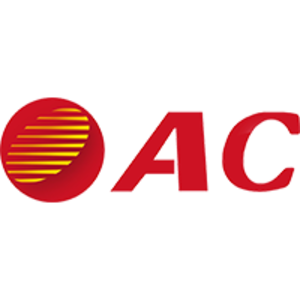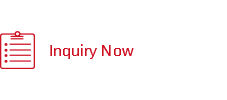LANGUAGE↓

News & Policies

Tax Reduction Policy for Small and Micro Businesses
China unveiled larger-scale tax cuts and tax exemptions for micro and small enterprises (MSEs), a State Council executive meeting chaired by Premier Li Keqiang decided on Jan. 9th. 2019.
The meeting rolled out a host of inclusive tax breaks for small and micro businesses as follows:
1 Small and low profit businesses with an annual taxable income of less than 1 million yuan ($146,500) and between 1 million to 3 million yuan will be eligible to have their tax calculated based on 25 percent or 50 percent of their taxable income. This is expected to reduce their tax burden to about 5 to 10 percent. The adjusted tax incentives are expected to cover 95 percent of corporate tax payers, 98 percent of which will be private businesses.
2 For small-scale taxpayers, mainly including small and micro enterprises, individual industrial and commercial households and other individuals, the VAT threshold will be raised from monthly sales of 30,000 yuan to 100,000 yuan.
3 The provinces (autonomous regions, municipalities) will be given the authority to cut taxes up to 50 percent for small-scale VAT taxpayers under several local tax items, including the resource taxes, urban maintenance and construction tax, stamp duty, urban land use tax, cultivated land occupation tax and other local taxes and as well as education and local education surcharges.
4 Expanding investment in start-up technology-based enterprises to enjoy the scope of preferential policies, so that venture capital companies and angel investment individuals who invest in such enterprises have more tax incentives.
5 In order to make up for the local financial gap caused by large-scale tax reduction and fee reduction, the central government will provide stronger general transfer payment to local authorities.
The above tax reduction policy can be traced back to January 1st.2019, and the implementation period is tentatively set for three years. It is estimated that the annual reduction of small and micro enterprises will be about 200 billion yuan.
Detailed interpretation of this policy is as below:
1. Standards for small, micro businesses
Finance and Taxation [2018] No. 77 stipulates that small, micro businesses refer to enterprises engaged in non-restricted and prohibited industries in the country and meet the following conditions:
(1) For industrial enterprises, the annual taxable income shall not exceed 1 million yuan, the number of employees shall not exceed 100, and the total assets shall not exceed 30 million yuan;
(2) For other enterprises, the annual taxable income shall not exceed 1 million yuan, the number of employees shall not exceed 80, and the total assets shall not exceed 10 million yuan.
The number of employees, including the number of employees who have established labor relations with enterprises and the number of workers dispatched by enterprises.
The number of employees and total assets should be determined based on the quarterly average of the company for the whole year. The specific calculation formula is as follows:
Quarterly average = (seasonal value + quarter end value) ÷ 2;
Annual quarterly average = the sum of the annual averages of the year ÷ 4
In the case of opening or terminating business activities in the middle of the year, the above relevant indicators shall be determined by using the actual operating period as a tax year.
2. About small, micro businesses income tax concessions
"The portion is not exceeding 1 million yuan, 1 million yuan to 3 million yuan, respectively, is reduced by 25% and 50% into taxable income, so that the tax burden is reduced to 5% and 10%", for example, the taxable income is 101 million, is directly in accordance with 101 * 50% * 20% = 101,000 (tax rate of 10%), or according to (100 * 25% +1 * 50%) * 20% = 51,000 (tax rate is 5.05%) )? More than 10,000, pay more than 50,000 tax? The previous algorithm is not very reasonable. The specific rules must be clear to the Ministry of Finance and the State Administration of Taxation. According to the tax rate notified by the State Council, it may be an unreasonable algorithm.
Of course, there are also the same problems. For example, the difference between taxable income of 3 million yuan and 3.01 million tax burden is also very large. This is also a characteristic of the concept of the threshold. The latter is the principle of the VAT threshold, which exceeds the threshold. In principle, in principle, the tax will be fully taxed, and the tax rate will vary greatly.
Finance and Taxation [2018] No. 77 stipulates that from January 1, 2018 to December 31, 2020, the upper limit of the annual taxable income of small and small-profit enterprises will be raised from 500,000 yuan to 1 million yuan, and the annual taxable income will be Small-scale meager profit enterprises with a profit of less than 1 million yuan (including 1 million yuan) shall be included in the taxable income by 50%, and the enterprise income tax shall be paid at the rate of 20%, as stipulated in Article 28 of the Enterprise Income Tax Law. Small-scale, low-profit enterprises with conditions are subject to a corporate income tax rate of 20%.
3. The VAT threshold is raised to monthly sales of 100,000
In accordance with the previous fiscal and taxation [2017] No. 76, in order to support the development of small and micro enterprises, from January 1, 2018 to December 31, 2020, continue to increase the monthly sales of 20,000 yuan (including the number) to 30,000 yuan. Tax small-scale taxpayers are exempt from VAT. This time, the New Deal will be renewed in a short period of time, and the preferential efforts will be greatly enhanced, indicating that the state has increased the support for small and micro enterprises. If it is a quarterly declaration, 300,000 sales in a quarter are exempt from VAT, and one year can be exempted from 1.2 million.
However, this practice is not be so good. Except for some businesses that cannot be deducted (such as passenger transportation services, loan services, catering services, daily residents’ services, entertainment services, etc.), most customers will request special VAT invoices. Small-scale taxpayers need to open a 3% VAT invoice.
According to the provisions of the Provisional Regulations on Value-Added Tax, if the tax-free sales behavior applies to the tax exemption regulations, no special VAT invoices may be issued.
4. 50% reduction of local taxes and education surcharges, local education additions
The policy granted to local provincial governments to reduce these pure local taxes by 50%. In the past two years, the financial situation has been under pressure from the economic downturn. This authorization will inevitably lead to a more reliant reduction in areas with good financial conditions. Of course, it is also a big plus for the company, but the small-scale taxpayers are not very large volume, so relatively the enjoyable scale also will not be so big.
The end
In 2019, the government will continue to promote the VAT reform. What is worth looking forward to is how to adjust the two tax rates? Will there be a tax refund policy for retained input tax deduction? AC will continue to follow up.





